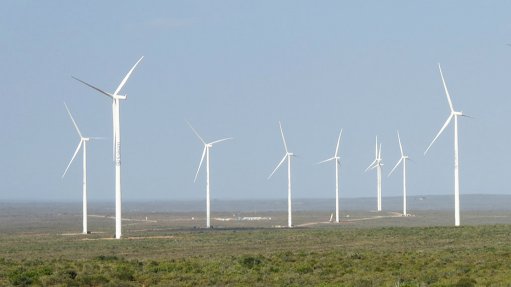Hydrogen Power
Now that it has finally dawned on some of us that cars with batteries need to be charged and that it takes time for this to happen and it is not the same time as needed by the driver to have a refreshment enter the promise of the hydrogen fuel cell car. Now it happens that I own a hydrogen fuel cell car. It’s a toy. You put on it a small solar cell in the sun, connect it to the car and it converts the water in the car to hydrogen and oxygen. You then switch it on and it runs for about a minute. It is about 20 years old. You can see, I think, the principal of the whole thing – turn water into hydrogen and oxygen using electricity and then combine them in a fuel cell to produce electricity. A bit of thought will reveal you could just have a tank of hydrogen and combine it with air and get electricity. The hydrogen would have to come from somewhere, say from renewable energy, thus converting renewable energy from an intermittent power source to a continual one. Another option is to produce hydrogen at a refinery by steam reforming of naptha or methanol or liquified petroleum gas (LPG). This latter process is so well known to Engineering News readers I won’t bore you by explaining how it works.
Recently an aircraft, flying from Cranfield airport, in the UK completed a 19 minute flight and consumed about 2 kg of hydrogen. Strictly speaking it used batteries and hydrogen fuel cells – nobody says why but I guess a battery as a back up. This was no fabric and wire experimental aircraft – it is a six seater low wing single engine on a Piper M-class airframe. So it really is a viable flight. The company which undertook the flight, ZeroAvia, has sated that a pure hydrogen power flight is possible.
Before we leap for the rings the cost of a fuel cell has to be considered. The cost right now is about $2 200 / kW which is not inconsiderable – a 100 kW diesel genset costs about $400 / kW. A solar panel installation cost about $1 500 / kW. In terms of the aircraft, there are big savings in the powertrain – an electrical powertrain is much less complex than a mechanical one.
The advantages of the electrical hydrogen aircraft are naturally, fuel cost, pollution free, and ease (may I suggest) of serviceability. Also, aircraft fly from airfields and thus it is fairly simple to have a fuelling depot – for hyrdogen powered cars it is not so simple. There is, naturally, an elephant in the room. Specifically elephants called “Hindenberg” and “R101”, being hydrogen fuelled airships which crashed, killing a total of 83 people. All in all from 1905 until 1945, 614 people died in airship crashes where most when the main lift gas was hydrogen. By comparison these days aircraft fatalities are about 500 people per year. In terms of deaths per passenger mile the airships were much more dangerous.
Getting back to the hydrogen-powered vehicles and aircraft we do consider that in a crash there will be a fuel leak and a fire. Gasoline also causes this but it is not under pressure and so leaks are less likely, one would think. But the fact is that there are thousands of LPG powered forklifts where the LPG is under pressure and you never hear of exploding forklifts (or, at least, I don’t) so perhaps as long as the fuel pressure tank is well designed there should be no problem. I think hydrogen and fuel cells are the answers we’ve been looking for. All the other technologies seem to be of the “yes, but . . .” type which require a change in public habits or establishment of a bit of infrastructure at the same time as the public must embrace a new technology. Refill the hydrogen tank as fast as a gas tank, same vehicle range and speed what’s not to like?
Comments
Press Office
Announcements
What's On
Subscribe to improve your user experience...
Option 1 (equivalent of R125 a month):
Receive a weekly copy of Creamer Media's Engineering News & Mining Weekly magazine
(print copy for those in South Africa and e-magazine for those outside of South Africa)
Receive daily email newsletters
Access to full search results
Access archive of magazine back copies
Access to Projects in Progress
Access to ONE Research Report of your choice in PDF format
Option 2 (equivalent of R375 a month):
All benefits from Option 1
PLUS
Access to Creamer Media's Research Channel Africa for ALL Research Reports, in PDF format, on various industrial and mining sectors
including Electricity; Water; Energy Transition; Hydrogen; Roads, Rail and Ports; Coal; Gold; Platinum; Battery Metals; etc.
Already a subscriber?
Forgotten your password?
Receive weekly copy of Creamer Media's Engineering News & Mining Weekly magazine (print copy for those in South Africa and e-magazine for those outside of South Africa)
➕
Recieve daily email newsletters
➕
Access to full search results
➕
Access archive of magazine back copies
➕
Access to Projects in Progress
➕
Access to ONE Research Report of your choice in PDF format
RESEARCH CHANNEL AFRICA
R4500 (equivalent of R375 a month)
SUBSCRIBEAll benefits from Option 1
➕
Access to Creamer Media's Research Channel Africa for ALL Research Reports on various industrial and mining sectors, in PDF format, including on:
Electricity
➕
Water
➕
Energy Transition
➕
Hydrogen
➕
Roads, Rail and Ports
➕
Coal
➕
Gold
➕
Platinum
➕
Battery Metals
➕
etc.
Receive all benefits from Option 1 or Option 2 delivered to numerous people at your company
➕
Multiple User names and Passwords for simultaneous log-ins
➕
Intranet integration access to all in your organisation


















